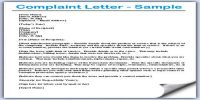Performance Appraisal is the methodical assessment of the performance of employees and to understand the abilities of a person for further development and progress. It is also known as performance rating, performance evaluation, employee assessment, performance review, merit rating, etc.
Distorting factors for performance appraisal: The factors that distort can be described are as follows –
Leniency error: Relative to the true or actual performance an individual exhibits, some evaluator’s marks high, while others mark low. The former is referred ‘to as positive leniency error, and the latter as negative leniency error.
Halo error: The halo error of effect is a tendency to rate high or low on all factors due to the impression of a high or low rating on some specific factor.
Similarity error: When evaluators rate other people in the same way that the evaluators perceive themselves, they are making a similarity error.
Low appraisal motivation: The evaluator may be reluctant to give a realistic appraisal. The tendency is more harmful than other pitfalls.
Central tendency: It is possible that regardless of whom the appraiser evaluates and what traits are used, the patter of evaluation remains the same.
Inappropriate substitutes for performance: It is the usual job where the definition of performance is absolutely clear and direct measures are available for appraising the incumbent.
Attribution theory: According to this theory, employee evaluations are directly affected by a supervisor’s perceptions of who is believed to be in control of the employee’s performance – the employer or the manager.
















